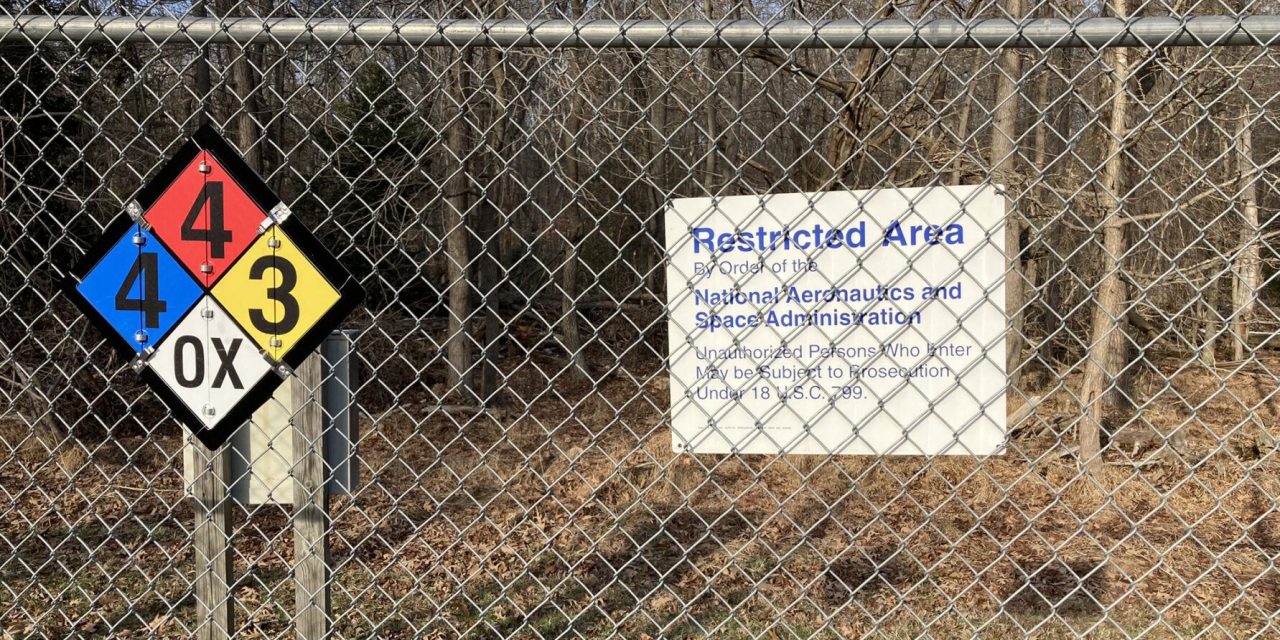The National Aeronautics and Space Administration has used its orbiting satellites to help scientists understand the value of forests in fighting climate change. Closer to home, though, the space agency is moving to sell a woodland it owns in Maryland, putting the trees there at risk of being bulldozed by a developer.
NASA has used Area 400, a mostly wooded 105-acre tract near Greenbelt, MD, for cryogenics and rocket propulsion testing. NASA is poised to sell the land, but others are calling for preservation, preferably by making it part of the neighboring wildlife research reserve.
The proposed sale of the 105-acre tract by NASA’s Goddard Space Flight Center in suburban Greenbelt, MD, has drawn protests from conservationists and expressions of concern from state and even other federal agencies. They note that the woods surround a headwaters stream of the Anacostia River, providing wildlife habitat, soaking up nutrients in rainfall runoff and capturing climate-warming carbon dioxide from the atmosphere.
“I just think it’s a travesty to lose this 100 acres, especially a forest in an urban area,” said Ann Swanson, executive director of the Chesapeake Bay Commission. “For reasons of water quality, climate change, environmental education, emotional sustenance, we need to protect this.”
Area 400, as NASA calls it, sits several miles east of the main Goddard campus, where scientists, engineers and technicians build spacecraft, instruments and sensors to study Earth, the solar system and the universe. They also oversee the two orbiting space telescopes and help communicate with astronauts aboard the International Space Station.
The tract has several small buildings and sheds in a one-acre clearing in the middle of the woods. NASA once researched rocket propulsion there, but now only uses the site for “storage and support,” according to spokesman Rob Garner. The agency has deemed the site “underutilized” and put it on a list of federal properties to be fast-tracked for sale.
Several members of Maryland’s congressional delegation have added their voices to those of environmental advocates who want to see the woodland preserved by transferring ownership to the U.S. Fish and Wildlife Service. The service has expressed interest in adding it to the adjoining Patuxent Research Refuge, a 12,800-acre expanse of forest, meadow and wetlands where federal scientists conduct wildlife research.
The refuge provides habitat for more than 200 species of birds and other wildlife including turtles, foxes, beavers and fish. It contains the National Wildlife Visitor Center, and its grounds are open to the public.
Jennifer Greiner, the research refuge manager, said she walked the NASA woods in September and has asked for more soil and groundwater testing to be sure the site hasn’t been contaminated by the rocket fuel-testing and other activities that have gone on there.
“We liked what we saw, but … we need to make sure it’s safe for public recreation,” she said.
Assuming it passes muster, Greiner said that the NASA tract would help buffer the refuge’s South Tract from the noise and light of traffic and development in the area. It also would expand protected habitat for a variety of birds and other wildlife, including threatened northern long-eared bats that have been sighted on the refuge.
A No-brainer
Joel Dunn, president of the Chesapeake Conservancy, called it a “no-brainer” that Area 400 should be transferred to the wildlife service.
“The refuge is literally next door, he said. Keeping the land in forest fits with the Biden administration’s America the Beautiful initiative, he noted, which aims to preserve 30% of lands and waters nationwide by 2030.
Bypassing the traditional process for divesting surplus federal property, NASA opted to sell Area 400 under a law passed by Congress in 2016 that aims to decrease the federal deficit by identifying properties for accelerated sale. The NASA tract is among 15 federal sites nationwide that the Public Buildings Reform Board, an independent agency, recommended in late December to be sold.
The board did propose transferring Area 400 to the Fish & Wildlife Service, noting that preserving it as part of the refuge would “enhance conservation and further the Biden Administration’s priorities of Climate and Racial Equity.”
But the board stipulated that the wildlife service should pay “fair market value” for the tract, and if that’s not possible, the land should be put up for sale to the highest bidder. It noted that NASA could use the income to cover its costs to demolish the buildings there and relocate those and other operations elsewhere.
Greiner, the refuge manager, said that based on sales of other land in the area, Area 400 might go for around $2 million.
“Not only do we not have the funds for that sort of acquisition, she said, “but we’re questioning the logic. It’s already owned by the United States of America.”
The U.S. Office of Management and Budget is to decide by Jan. 27 whether to approve the public building board’s recommendations for the NASA tract and other properties.
Maryland Sens. Ben Cardin and Chris Van Hollen and four of the state’s congressmen — including Rep. Steny Hoyer, the House Majority leader whose district includes Goddard — wrote to the acting head of the OMB on Jan. 20 urging the transfer of Area 400 to the Fish and Wildlife Service “in the most expedient manner possible.” They noted that conserved land helps keep pollutants out of waters that ultimately flow to the Chesapeake Bay.
In lieu of going ahead with a sale, advocates say, the OMB could opt to approve the transfer without requiring the wildlife service to pay for it, or it could hold off making any decision.
Whatever happens, Dunn said, “This land should not be sold on the open market and put in the hands of developers.”




Recent Comments